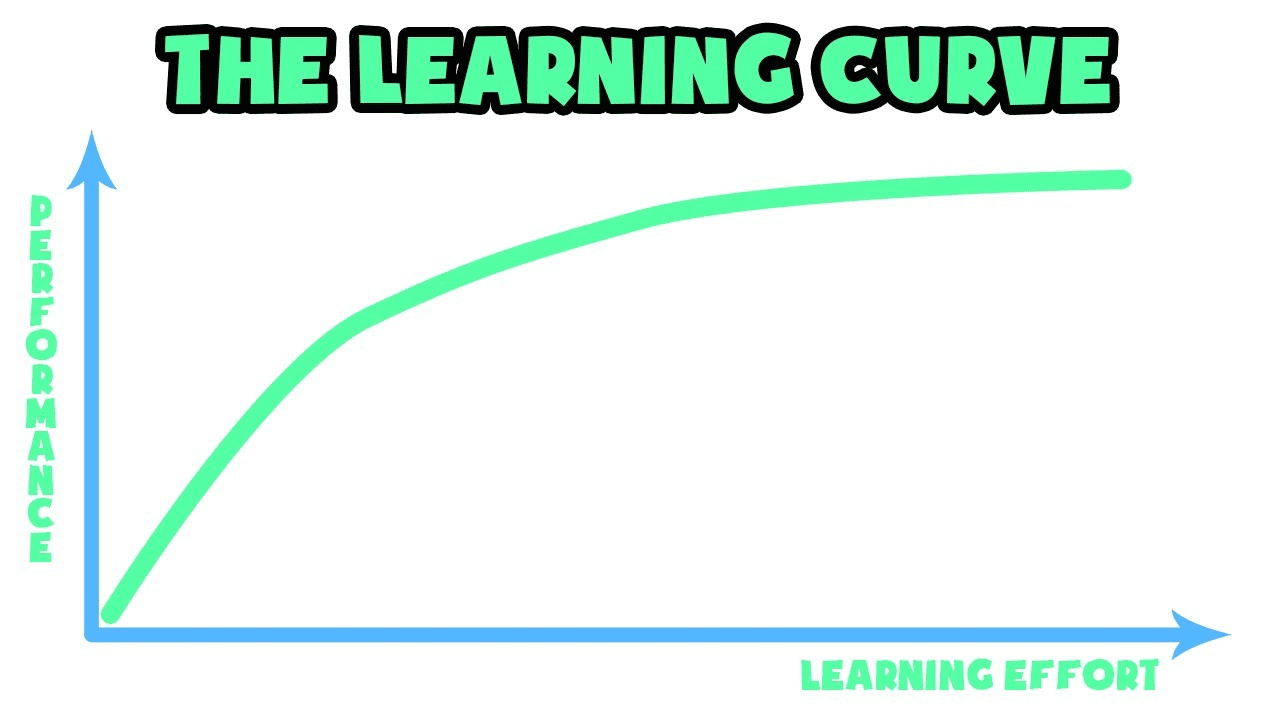- What is human resource development and how does it contribute to organizational strength?
- How does employee skill assessment help align business goals with employee capabilities?
- What are some of the strengths of a human resource development program, and how do they impact employee success?
Chapter 1: Introduction "Analysing Human Resource Development"
The cultivation of the employee in the organisation is termed as the human resource. The relevant knowledge and the skills were provided to the worker which will help them in increasing the efficiency in the MIFCO organisation. As strong as the employees the organisation will also be strong (Raut and et.al., 2020). Employees readiness and the capability in the job was measured by the company through the process of employee skill assessment. There should be the strong alignment between the business goal and the skill for the success of the business in the competitive market. Get best assignment Help from Instant assignment writers.
Strengths of the Human Resource Development Program
In the organisation there is the development and the learning of the both employees and the HR by the great HR leaders. In the organisation the workers get the success through the help of the concepts such as the training, mentoring, techniques and the coaching. The employee and the employer gap bridge was built by the HR departments (Letebele, 2020).
Human Resource Development Program weaknesses
The weakness of the HR are that were slow in adopting the new process or for the completion of the work or the task. For example, there is the not connection of the business strategies with the top management performance or to the better talent. The another weakness of the HR is that they were less focused to the customer which can impact in the decrease in the revenue (Raut and et.al., 2020). Between the external result and the internal practices there is the another disconnect. To the connecting of the companies strategic direction and the HR the data analytics and the HR data incorporation is also considered as important step.
The top competencies and the critical skills will be build in the four consecutive years. For 2022 the human resource development program will focus on the equity and the inclusion, diversity and leadership and the change management initiatives (Stander, Grimmer and Brink, 2019). Get free examples of assignment to achieve A+ Grade in your assignment.
Chapter 2: Contrasting different learning styles
Different learning styles
|
Honey and Mumford learning Style |
Kolb's learning style |
The Myers Briggs |
|
· Peter Honey and the Alan Mumford published the learning style of Honey and Mumford in 1986. The four different style were identified in the learning style based on the using of the learning style by the people. The four styles are: activist, theorist, reflector, pragmatist. |
· In 1984 the Kolb learning style was developed by the David Kolb. The inventory of learning style was developed. To the internal cognitive process of the internal the theory was concerned (Biabani and Izadpanah, 2019). The four learning styles are the diverging, converging, accommodating and the assimilating. |
· The person's personality type and the psychological preference was identifies through the evaluation of self report (Mukhalalati and Taylor, 2019). The categories which were consist in theory are sensing, introversion, judging and thinking. |
The different types of learners are:
- Activist- By doing the best there was the learning of the people is referred to as activist. Using the brainstorm session the problems were tackled by the people. Working with others, new experience trying helps in learning best to activist (Brieger, Arghode and McLean, 2020). The greatest risk taker are the Accommodators out of the four style.
- Theorist- Through understanding of the theory there is the best learning of the theorists people. To learn effectively they required the facts, models and the concepts. To the reflective observation area and the abstract conceptualization area the assimilators were skilled. The theories were not practically applied by the people.
- Pragmatist- Putting the practice into the real life help the people in learning in the pragmatist. Where the correct, single and the concrete answer situation the converger was preferred.
- Reflector- Observing the others and thinking the others observation leads to learning of reflectors (Biabani and Izadpanah, 2019). The new ideas came in the brainstorm enjoying, creative and emotion in the diverges. The learning style includes the musician, artists, counsellor, liberal arts and the humanities. Get best Personal Statement writing Service from Instant assignment writers @51% off.
Learning theories
- Behaviourist theory- The individual person were helped and motivated by understanding them in the behavioural learning theory. With the right stimulus the information was transferred to the learners from the teachers (Brieger, Arghode and McLean, 2020). In the behavioral learning the learners are the passive participant. In the behavioral learning theory the positive reinforcement is considered as key.
- Cognitive theory- The brain potential was maximised through the help of the active learning style in an cognitive learning. Through the existing ideas the new information can be connected easily by deepening on the retention and the memory capacity (Biabani and Izadpanah, 2019). Cognition is referred to retaining and absorbing of the mental brain process through the experience, thought and sense.
- Social learning theory- The initiating and observing the others behaviour to the learning by the social behaviour is referred to as social learning theory. To the social context the cognitive process takes place into the learning. Through the direct instruction or the observation the learning can be purely occurred. The five essential steps was proposed by the Banudra as the social learning theory creator (Mukhalalati and Taylor, 2019). To take place of learning the steps are attention, observation, motivation, reproduction and the retention.
The significance of the learning theories
The learning of the learners can be understood by the trained through the learning theories. Thus, the learning theories was considered as important. The more comprehensive learning strategies can be developed by the trainer through the different learning method using. The cognitive, behaviorism, humanism, constructivism, connectivism was considered as the important learning theories. All the learning areas, including the curriculum development in the self learning practices will be shaped through the learning theories.
The individual person growth as a result of cooperative interactions with the others
To the result of the other interaction with the cooperative in the learning process there is the growth of the individual person (Sharif and Afsar, 2018). In the environment there will be the better understanding by the learners through the advancement of understanding. Through the process there will achieve the success of the person, adapt and improve behaviours, healthy relationship will maintained and create. There will be develop in the decision making skills and the leadership will be gained, the work management of the person will increase.
Chapter 3: Investigating the role of the learning curve and the importance of transfer of learning the workplaces
Defining the role of the learning curve to the workplace
To understand the occurrence of the operational efficiency the planning tool was used in context to the learning curve. The quick completion of the task over the time to gain the proficiency in task can be identified in the MIFCO organisation through the help of the learning curve (Brieger, Arghode and McLean, 2020). The improvement over the time, training progress tracking, learners performance can be predicted, productivity can be improved in the workplace.

Applying the learning curve to measure the performance of the organisation
To the performing of the task the amount of time consume was determined by calculating and the measuring the learning curve. For the identification of the rate of efficiency to the performed task the improvement was assigned by the learning curve. Thus, the task will perform more proficient. Determining the deploying of the resource is the most important task for the professionals of learning and development for the greatest possible effect achieving. The productivity in the MIFCO can be tracked by applying the Learning curve theory by the managers (Sharif and Afsar, 2018). It also includes the identification of the biggest impact due to the L&D resources, the requirement of the most support to the employees. The employees improved performance and the investment over the time can be understand. The better result will get to the employees by more and more working on the idea.
Explaining the importance of transfer of learning to workplace
From the prior setting the ability, education or the insights can be taken by the learner is termed to as the transfer of learning. To the development of the new skills into the role transferring of training and learning is crucial for the employee's. There will be the greater productivity for the employee's in the MIFCO workplace by the transferring of the knowledge. It also helps the agency in getting the greater return on the investment. The transfer of learning consists of two types (Claassen., van Workum and Rosman, 2019). The near and the far are the two types of the learning transfer. When the two situations are similar the near transfer was applied in that skill. Thus, when there is the dissimilarity between the current situation and the learning environment the far transfer will applied. To the setting of the business transfer of learning was considered important. To the MIFCO company there will get a strong return on investment if the usable knowledge base was brought by the employee's.
Defining of the learning curve useful to help in reducing the cost, improving the productivity and performance of the business
To the conduct of the production planning, logistic schedules and the cost forecasting the learning curve can be applied by the MIFCO company. For the company the cost saving was translated from the learning in the learning curve slope. The rate of the learning translate was represented. To the undertaking of the project the true cost can be assessed through the help of the learning curve (Jaramillo-Baquerizo, Valcke and Vanderlinde, 2019). For example, for the understanding of the per cost unit and the production cost the fundamental part was played by the learning curve. To the manufacturing line the hiring of the new employee will help in increasing the level of production, to the job employee will be more proficient. In a small amount of the time the work will complete. We provide best PHD Dissertation Help in UK.
Explaining the positive and the negative of transfer in the work place
In the workplace the positive and the negative transfer are as follows:
Positive Transfer - To the target role or the job there will increase in the performance of the training. To the most training programs there is the goal of positive transfer. In the positive learning there is the aid of the previous learning at the later time (Brieger, Arghode and McLean, 2020). For example, in the maths class there is the discovering of the learning by a student.
Negative Transfer - To the targeted role or job the performance was decreased in the training. There is the interferes of the learning at the later time which was learned. For example, for playing of the instruments the way of learning of the student.
Chapter 4: Analysing the need of training at different level of organization
Evaluation of training needs and outcomes:
Training need analysis is termed as the process where the companies identify need for training and developing the employees. It includes the analysis of requirements of training needs at various levels of organization. There are different levels in the organization of MIFCO Pvt company.
There is advancement in the technology which increases the need of training and development in the organization. It helps to groom the employees and further increases the productivity (Sekerin and et.al., 2018). Different organizations have experts in their companies that train the employees which enhances their personal development needs. The company of MIFCO send their employees for different training programmes which are help outside the premises of the organization. The workers are rewarded with the correct and handsome amount of appraisals for completing their training.
Companies which have wide goals need to train their employees properly for achieving the objectives of the organization. Managers identify the needs and assess the current skills present within the employees and then identify the training gap. Training gap is the difference between the existing skills within the employee and the skills required for completing the given task.
Potential contribution of training to the key objectives:
Training contributes majorly to the achievement of objectives of the organization. Following are the ways in which training can help the company to fulfil the goals.:
- Connect to business goals- Every organization work in order to achieve the goals which are prescribed by it. In order to meet the objectives proper training for the employees is required and training can connect the path to leading the business towards success.
- Align procedures- The procedure for achieving the objectives is very time consuming and not at all cost efficient. This increases the need to train the employees and the management to make the process easy and worthy. Therefore, training plays an important role in achieving group objectives (Hidayat and Aziz, 2022).
- Skilled employees- Employees are the key to success for every organization and the work performed by the employees can make the process smooth. However, they also require training because of the technological developments so that business objectives are achieved.
Identifying symptoms of the need for training
With the technological developments and various other reasons, sometimes there is a need to train the employees of the organization. Following are the indicators that shows there is a need for training in the organization:
- Inconsistent work- When the work is not performed effectively and the work performed is inconsistent because of lack of training to the employees is the main indicator to train the employees.
- Skills gaps- Skills gaps occurs within the organization when there are different skilled workers working in the company. For example: the organization has older and experiences workforce and newly and freshly hired workforce. This increases the skill gap.
- Quality and productivity issues- There are times in the organization when the quality is suffered because of usage of obsolete technology and this reduces the productivity. In order to use the latest technology, skills are required which comes by proper training of the employees.
Investigating the training needs and development
There are various training and development needs for the company and it is very important for the organizations to assess these needs. They are as follows:
- New hire orientation- Training is very essential for the new employees that joins the organization. This training is given to them by an expert who has the duty to give orientation training to the new employees.
- Tackle shortcomings- Each employee in the company has a shortcoming and training can solve this problem. All the managers are responsible for identifying the shortcomings in teach and every individual (Mazhisham and et.al., 2018).
- Improvement in performance- By the help of proper training performance of the employees is enhanced and it further helps the organization to earn profits. Training and development can improve the performance of the employees and the organization as a whole.
- Employee satisfaction- When the employees are properly trained they can achieve their desired target and this increases the satisfaction among the employees (Wang and et.al., 2020).
Similarities and differences between the identified training needs
The difference between the identifies training needs is that some can be done within the time frame but some are very time consuming. Training of employees takes time depending upon the type and power of employees. Similarities between all the training needs is that all of them results in higher productivity as the employees feel satisfied and increases the profits which makes it important to train the employees.
Chapter 5: Contrasting advantages and disadvantages of training methods used in the organizations
Training methods - training methods includes the different type of trainings that can be given to the employees in order to sharpen their present skills and make them learn new skills. The skills that the employees learn can be of different type and this can lead to the organization's success.
Types of training methods
There are various types of training methods available to the companies in order to train their employees. It is not necessary that only new employees are trained but the old templates and even the experiences employees are also trained with the help of these training methods. Following are the methods of training:
- Classroom training- This type of training is provided to the employees in a classroom or a room that is made like a class room. It is consisted of projectors, video, PowerPoint Presentation etc. it is the most traditional and one of the most used method of training (Spreen, Afonso and Gerrish, 2020.).
- Interactive methods- Interactive method is the addition to the classroom method of training and here several activities are added to the classroom style method. These activities include GD, quiz, role-playing etc.
- Hands-on training- It is the method of training where the employees get trained practically by using different means like coaching, cross-training etc.
- Computer-based training- This type of training is given to the employees with the use of technology on computers. Use of text, virtual reality are included under this method.
- Online-training- This type of training is given online as e-learning has increased.
- Video training- This training is given with the help of videos like screen recorded, live-action and animation.
- On-the job- It is offered to the employees who are currently working in the organization.
- Of-the job training- It is given to the employees who are being shifted to the area of workplace where the pressure is low.
Pros of training methods
Following are the pros of training methods:
- Classroom style method of training ensures that same information is distributed to the whole at a same time.
- Interactive style method of training involves passing the information from experienced employees to new recruits.
- Hands-on-training makes it easy for the trainer to know whether the trainee has learned the process and the skill.
- Computer based training is measurable and trackable. The amount of training and the level can be measured.
- Online training can be used because of the lack of travel expense and cost efficiency. No travelling is required and therefore it reduces the cost of travelling.
- Video training method is used because of its accessibility. It is easily accessible and therefore it is considered mostly by the organizations (Mahboob, 2022).
- On-the-job training allows the trainee to learn in the actual work environment.
- Of-the-job training is an organized form of training.
Cons of training methods
Following are the cons of training methods:
- Classroom style method is not considered interactive which is a disadvantage of this type of training method.
- Interactive training method is very time-consuming which is the reason it is preferred less by the business.
- Hands-on-training method is not useful for large group of members unless until each member is free to use their own equipment.
- Computer based training method is not designed properly then it will lead to ineffective results or outcomes.
- In online training method the trainee should be literate and should possess full knowledge on the training that they have to give to the employees.
- It depends upon the employee's preference because most of the employees do not like to watch videos as it is time-consuming.
- Disadvantage if on-the-job training method is that if the trainee is not up to the mark then it will affect the training of the trainee.
- Of-the-job training method is costly and considered more of a formal way of training (Larasati and Martono, 2020).
Contrasting the pros and cons of methods of training
The pros and cons of the training methods as discussed above have some differences. Businesses prefer some of the methods as the most effective methods but some of them are considered as the least effective for the business. There are several methods which are time-consuming and need not be used in the business. Whereas, some training methods are responsible for creating the skills among the employees. It is very essential for the business to analyze the pros and cons for running the business successfully.
CONCLUSION
It has been concluded from the above report that the management of the organisation employees from the recruitment to the final review was termed as the process of human resource management. The collective relationship between the employee and the organisation is termed to as the employment relation. Thus, the report included the five chapters of the human resource management practice. In the first chapter of the report the the gap of the employees was assessed and the weakness and the strength of HR was discussed. The second chapter of the report focused on the contrasting of the different styles of learning including the different learners type. Further, in the third chapter the learning curve role was investigated and to the workforce the importance of the transfer of learning was studied. Moreover, in the fourth chapter the training needs for the different level staff in the organisation was analysed. Lastly, the fifth chapter of the report contrasted the disadvantages and the advantages of the using of the training methods in the MIFCO organisation.
Read Also - TOP8001 Unit 20 Employee Relations - Tesco
REFERENCES
Books and Journals
- Biabani, M. and Izadpanah, S., 2019. The Study of Relationship between Kolb's Learning Styles, Gender and Learning American Slang by Iranian EFL Students. International Journal of Instruction. 12(2). pp.517-538.
- Brieger, E., Arghode, V. and McLean, G., 2020. Connecting theory and practice: reviewing six learning theories to inform online instruction. European Journal of Training and Development.
- Claassen, L., van Workum, F. and Rosman, C., 2019. Learning curve and postoperative outcomes of minimally invasive esophagectomy. Journal of Thoracic Disease. 11(Suppl 5). p.S777.
- Hidayat, A. and Aziz, M.A., 2022. The Role of Job Training in Improving Employee Performance. Adpebi International Journal of Multidisciplinary Sciences. 1(1). pp.21-30.
- Jaramillo-Baquerizo, C., Valcke, M. and Vanderlinde, R., 2019. Professional development initiatives for university teachers: Variables that influence the transfer of learning to the workplace. Innovations in education and teaching international. 56(3). pp.352-362.
- Larasati, A.P. and Martono, S., 2020. Increase Employee Morale Through Transformational Leadership, Employee Relation, and Work Environment. Management Analysis Journal. 9(1). pp.1-7.
- Letebele, P.C., 2020. Analysing human resources acquisition in the South African military health service (Doctoral dissertation, Stellenbosch: Stellenbosch University).
- Mahboob, A., 2022. The Impacts of Organizational Justice and Conflict Management on Employee Relation With Mediating Role of Climate of Trust. British Journal of Innovation in Science, Research and Development. 1(1). pp.46-58.
- Mazhisham, P.H. and et.al., 2018. Identification of training needs assessment in organizational context. IJTMSS. 1(5). pp.20-30.
- Mukhalalati, B.A. and Taylor, A., 2019. Adult learning theories in context: a quick guide for healthcare professional educators. Journal of medical education and curricular development. 6. p.2382120519840332.
- Raut, R.D., and et.al., 2020. Analysing green human resource management indicators of automotive service sector. International Journal of Manpower.
- Sekerin, V.D. and et.al., 2018. Improving the quality of competence-oriented training of personnel at industrial enterprises. Calitatea. 19(165). pp.68-72.
- Sharif, S. and Afsar, A., 2018. Learning curve and minimally invasive spine surgery. World neurosurgery. 119. pp.472-478.
- Spreen, T.L., Afonso, W. and Gerrish, E., 2020. Can employee training influence local fiscal outcomes?. The American Review of Public Administration. 50(4-5). pp.401-414.
- Stander, J., Grimmer, K. and Brink, Y., 2019. Learning styles of physiotherapists: a systematic scoping review. BMC medical education. 19(1). pp.1-9.
- Wang, C. and et.al., 2020, April. Personalized employee training course recommendation with career development awareness. In Proceedings of the Web Conference 2020 (pp. 1648-1659).





















